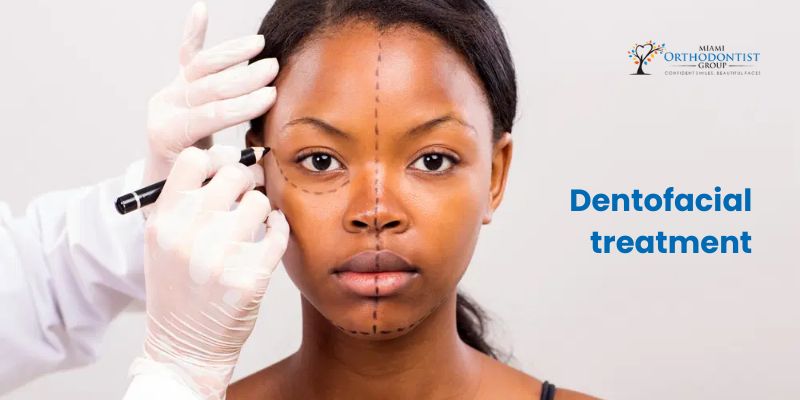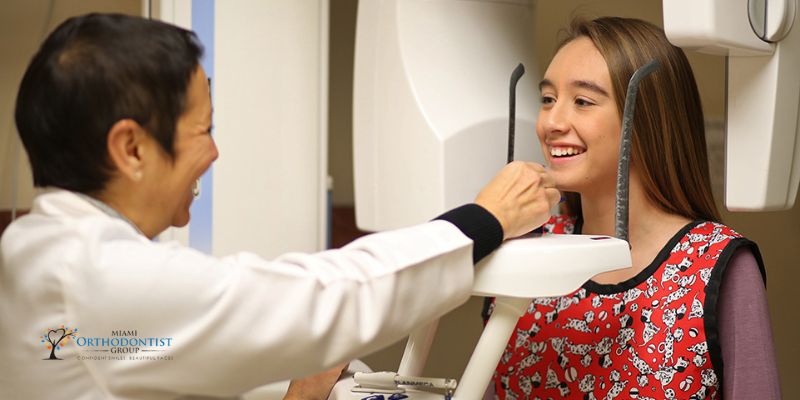A radiant smile can be a powerful asset, not just for aesthetic reasons but also for overall health and well-being. Dentofacial treatment, a specialized field that integrates dental and facial aesthetics, is crucial in enhancing oral health and one’s overall appearance. In this article, we will explore the significance of dentofacial treatment in achieving a harmonious balance between dental function and facial aesthetics.
The Interconnected Nature of Dentofacial Health
Dentofacial health encompasses the relationship between the teeth, jaws, and surrounding facial structures. Beyond a beautiful smile, a well-aligned dentofacial structure contributes to optimal oral function and overall facial aesthetics. Misalignment or irregularities in the teeth and jaw can lead to many issues, including difficulty chewing, speech problems, and even temporomandibular joint (TMJ) disorders.
Proper alignment of the teeth and jaws is not just about cosmetic appeal; it is vital for the efficient functioning of the oral cavity. Dentofacial treatment addresses these issues comprehensively, focusing on achieving harmony between the teeth, jaws, and facial features for a more functional and aesthetically pleasing outcome.
 Enhanced Oral Functionality
Enhanced Oral Functionality
Dentofacial treatment, particularly orthodontic interventions, is crucial in improving oral functionality. Correcting misalignments, bite issues, and jaw irregularities can significantly enhance an individual’s ability to chew, speak, and perform other essential oral functions. This contributes to better overall oral health and reduces the risk of complications such as temporomandibular joint disorders.
Orthodontics: Beyond Cosmetic Enhancement
Orthodontic treatments are a cornerstone of dentofacial care, offering solutions to various dental and facial irregularities. Braces, aligners, and orthodontic appliances are designed to correct misalignments, overcrowding, and bite issues. While these treatments contribute significantly to cosmetic enhancement, their impact extends beyond a beautiful smile.
One of the primary benefits of orthodontic intervention is improving oral function. Straightening misaligned teeth and correcting bite issues can enhance chewing efficiency, reduce the risk of temporomandibular joint disorders, and promote oral health. Additionally, proper tooth alignment facilitates better oral hygiene practices, as straight teeth are easier to clean, reducing the likelihood of gum disease and cavities.
Improved Oral Health
Dentofacial treatments, including orthodontics and preventive care, contribute to improved oral hygiene and health. Straightening misaligned teeth makes them easier to clean, reducing the risk of gum disease, cavities, and other dental issues. By addressing dental irregularities early through preventive measures, dentofacial treatments can prevent the development of more severe oral health problems in the future.
 Facial Aesthetics and Dentofacial Harmony
Facial Aesthetics and Dentofacial Harmony
Beyond the functional aspects, dentofacial treatment emphasizes harmony between dental features and facial aesthetics. Facial proportions are crucial in determining an individual’s overall attractiveness, and the smile is a central element in this equation.
Orthognathic surgery is one aspect of dentofacial treatment that addresses severe jaw irregularities that cannot be corrected through orthodontics alone. This surgical intervention aims to reposition the jaws to improve facial balance and symmetry. By aligning the jaws with the rest of the facial features, orthognathic surgery enhances appearance and improves functionality and long-term oral health.
Dentofacial treatment goes beyond just correcting visible issues; it involves a comprehensive understanding of the patient’s facial features and how they relate to dental health. This holistic approach ensures that the treatment results in a beautiful smile and contributes to an overall balanced and attractive facial appearance.
The Psychological Impact of a Beautiful Smile
The significance of a beautiful smile extends beyond the physical realm and profoundly influences one’s psychological well-being. Research consistently demonstrates the positive effects of an attractive smile on self-esteem, confidence, and interpersonal relationships. Individuals with a healthy and aesthetically pleasing smile are often perceived as more approachable, confident, and successful.
Dentofacial treatments, by addressing both functional and aesthetic concerns, can have a transformative impact on an individual’s self-image. Correcting dental irregularities enhances physical appearance and empowers individuals to smile freely, fostering a positive self-perception and improving their overall quality of life.
The Evolution of Dentofacial Technology
Advancements in dental technology have revolutionized dentofacial treatments, offering more efficient and comfortable solutions for patients. Traditional metal braces have given way to discreet options like clear aligners, which provide a less conspicuous alternative for those seeking orthodontic correction. Digital imaging and computer-aided design have also streamlined treatment planning, allowing for more precise and personalized interventions.
The integration of technology in dentofacial treatment not only improves the patient experience but also enhances the effectiveness of the interventions. From 3D imaging for treatment planning to robotics in surgical procedures, technology continues to push the boundaries of what is possible in achieving optimal dentofacial health and aesthetics.
The Role of Preventive Dentofacial Care
While many dentofacial treatments focus on correction, preventive care is equally important in maintaining optimal oral health. Regular dental check-ups, early intervention in cases of dental irregularities, and promoting good oral hygiene practices contribute to preventing the development of severe dentofacial issues.
Preventive dentofacial care is especially crucial in childhood and adolescence when the jaw and teeth are still developing. Early orthodontic assessments can identify potential issues and allow for timely intervention, minimizing the need for extensive treatments later in life. Emphasizing the importance of preventive dentofacial care promotes a proactive approach to oral health, reducing the prevalence of dental irregularities and their associated complications.
Conclusion
Dentofacial treatment is pivotal in enhancing oral health and overall appearance. Beyond pursuing a beautiful smile, these interventions address functional issues, contribute to facial harmony, and profoundly impact psychological well-being. The evolution of technology in dentistry has further expanded the possibilities, making treatments more accessible, efficient, and comfortable for patients.
Dentofacial treatments aim to achieve a harmonious balance between dental function and facial aesthetics, whether through orthodontics, orthognathic surgery, or preventive care. As we continue to recognize the interconnected nature of oral and facial health, investing in dentofacial treatments becomes an investment in not just a radiant smile but in the overall well-being and confidence of individuals seeking to put their best face forward in the world.


